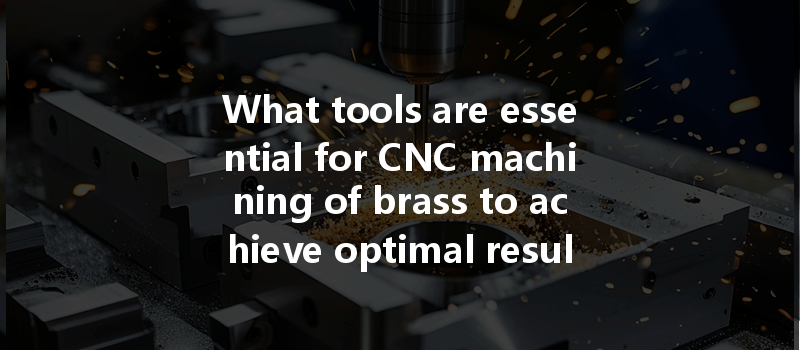Did you know that brass, an alloy of copper and zinc, has been used for centuries in everything from weaponry to musical instruments? Its unique properties make it ideal for various applications, particularly in CNC machining. According to industry reports, the demand for brass CNC machined components is expected to grow by over 10% annually, primarily due to its excellent machinability and aesthetic appeal. In this blog, we’ll explore the essential tools for CNC machining brass, providing you with everything you need to know to ensure optimal results.
: The Allure of Brass in CNC Machining
Brass has compelling characteristics such as corrosion resistance, varying grades for different applications, good machining capabilities, and an attractive finish. This combination of properties makes brass a material of choice for many CNC machinists.
Not only does it offer a beautiful golden appearance, but it also exhibits advantageous mechanical properties, such as malleability and ductility. As a machinist, knowing how to effectively work with brass can lead to highly efficient production processes and impressive end results.
However, to achieve success in CNC machining brass, you need to use the right tools. This blog will discuss various tools essential for machining brass, considerations for choosing the right tools, and some tips for mastering the machining process, all while ensuring high-quality results.
Chapter 1: Understanding Brass and Its Types
Before diving into the tools needed for CNC machining brass, it is essential to understand the material itself. Brass can be divided into various categories, including:
Understanding these types will directly affect the machinability and, consequently, the tools you select for CNC machining.
Chapter 2: The Essential Tools for CNC Machining Brass
2.1 CNC Machine
The fundamental tool for any CNC machining process is, of course, the CNC machine itself. When selecting a CNC machine for brass:
2.2 Cutting Tools
Selecting the right cutting tools is crucial to achieving a clean cut and preserving the integrity of the brass material. Here are some recommended tools:
2.3 Tool Coatings
Consider using coated tools, as they can significantly extend tool life and improve performance. Here are some suggested coatings:
2.4 Workholding Tools
Properly securing your brass workpiece is vital during machining. Consider using:
Chapter 3: CNC Machining Techniques for Brass
Now that you have the essential tools in mind, it is crucial to understand the techniques for achieving optimal results when machining brass. Key considerations include:
3.1 Feed Rate and Speed
The feed rate can significantly affect the finish and tool wear. Ideally, a slower feed rate will provide a better surface finish. Use the following guidelines:

3.2 Coolants and Lubricants
Using the right coolant or lubricant helps reduce heat, prolongs tool life, and improves surface finish:
3.3 Chip Management
When machining brass, managing the chips produced is essential for both safety and maintaining material quality. Here are some strategies:
Chapter 4: Common Challenges in CNC Machining Brass and Solutions
4.1 Tool Wear
Tool wear is common in CNC machining projects. Monitor tools and replace them based on signs of wear or during scheduled replacements.
4.2 Burr Formation
Burrs on the edges of parts can hinder functionality. Strategies to avoid burrs include:
4.3 Surface Finish
Achieving a high-quality surface finish is vital for many brass applications. Strategies include:
Chapter 5: Future Trends in Brass CNC Machining
As the machining industry evolves, several future trends are shaping the landscape of brass CNC machining:
5.1 Advanced Coatings
Innovation in coating technology will likely lead to even more effective tools for machining brass, resulting in longer tool life and improved surface finishes.
5.2 Automation and Robotics
Integrating automation and robotics into CNC machining processes can further enhance efficiency and precision, making it easier to handle complex brass components.
5.3 Sustainable Practices
As the industry moves towards more sustainable production, using environmentally friendly coolants and recycling metal scrap will gain importance.
5.4 CAD/CAM Technologies
Continuous advancements in CAD/CAM software will enhance design capabilities, allowing for more intricate brass components to be machined with greater accuracy.
CNC machining of brass involves a unique variety of tools and techniques that must be well understood to achieve optimal results. Throughout this blog, we explored everything from the essential CNC machine and cutting tools to the intricacies of machining techniques and common challenges associated with brass machining.
In summary, mastering the machining of brass requires the right equipment, a solid understanding of brass types, and effective management of machining parameters. Companies looking to excel in this field will benefit from adopting advanced technologies and being aware of emerging trends.
As a machinist or shop owner, understanding the essentials of CNC machining brass is important not just for the sake of production efficiency but also for maintaining quality and customer satisfaction. In this ever-evolving industry, knowledge is power, and keeping abreast of the best practices and new developments will pay dividends in the long run.
Now that you have a thorough understanding of the essential tools and techniques for CNC machining brass, it’s time to put these insights into action. Whether you’re looking to enhance your existing skills or dive into something new, the fascinating world of brass machining awaits you!






